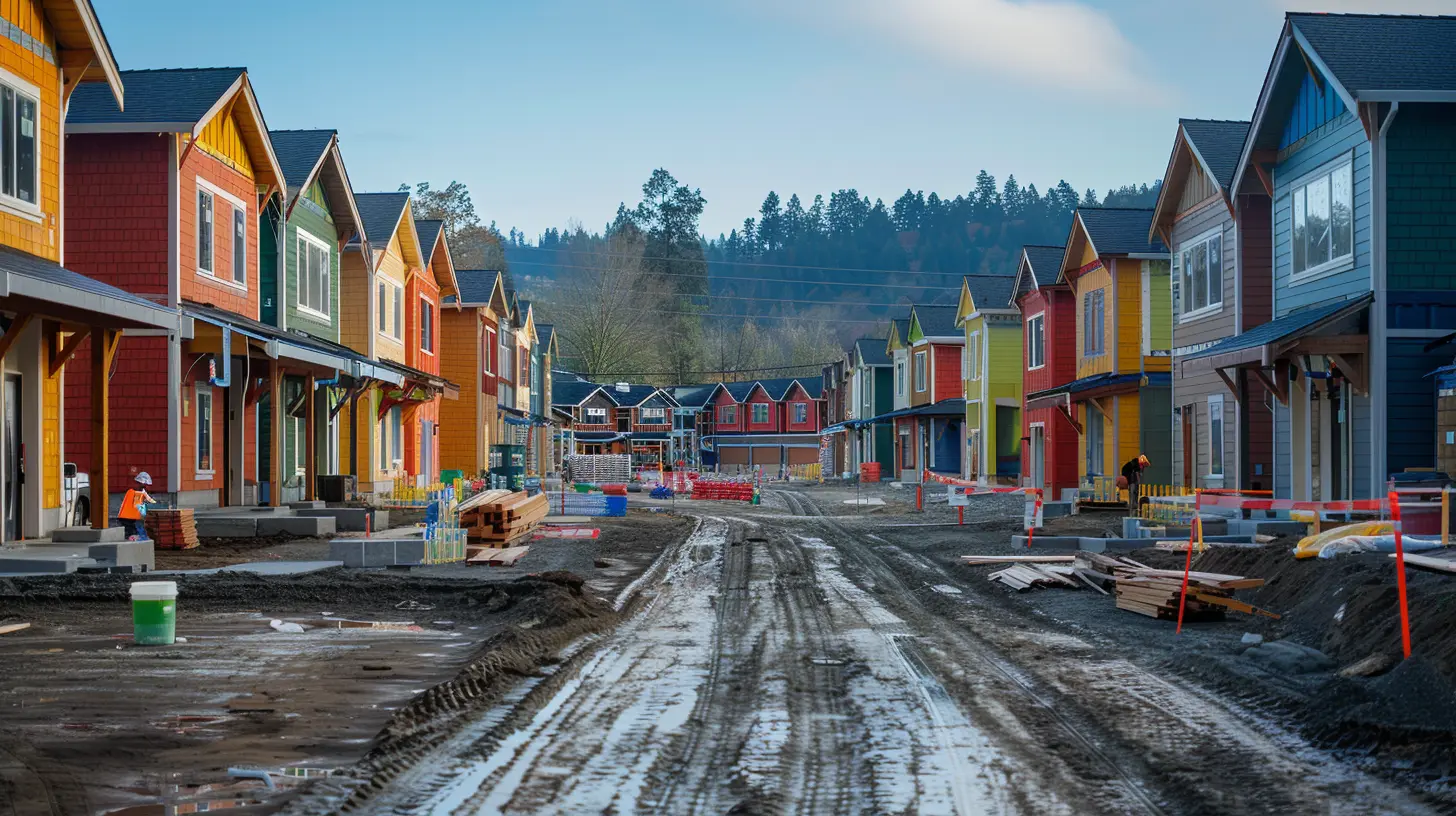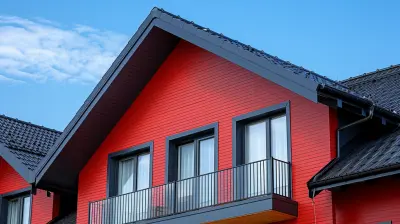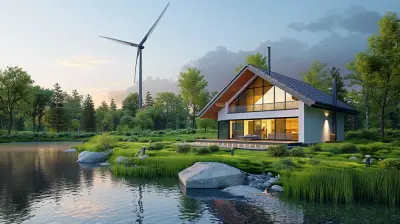What Experts Predict About the Future Supply of Affordable Housing
10 August 2025
Affordable housing has been a hot topic for years, and let’s be honest—it’s not cooling off anytime soon. With soaring home prices, rising rents, and stagnant wages, more people are wondering, “Will I ever be able to afford a home?” You're not alone if you're asking that, and luckily, experts have been digging into this very issue.
So what does the road ahead look like for affordable housing? Is there hope on the horizon, or are we stuck in an endless cycle of rising costs and shrinking options? In this article, we’ll break down what housing analysts, economists, and real estate pros see coming for the affordable housing market. Spoiler alert: it's not all doom and gloom.
Let’s dive in.
A Quick Reality Check: Why Affordable Housing Is In Crisis
Before we jump into predictions, let’s lay the groundwork. What’s the deal with affordable housing?The short version? There's just not enough of it. Supply hasn’t kept up with demand, construction costs are high, land is limited (especially in urban areas), and policies haven’t exactly moved the needle fast enough.
Affordable housing typically means spending no more than 30% of one's income on housing. But with rents sky-high and home prices through the roof, millions of people are well past that mark.
And the result? People are stretching their budgets, moving farther away from job centers, or doubling up with roommates or family just to get by. Others are priced out completely.
Now that we’ve painted the picture, let’s talk about what’s coming.
Prediction #1: More Public-Private Partnerships
One of the biggest trends experts are pointing to? More collaboration between governments and private developers.Cities can’t solve the affordable housing crisis by themselves—and neither can developers. But when they team up? That’s where the magic can happen.
Governments offer incentives like tax breaks, subsidized land, or faster permitting processes. In exchange, developers agree to include affordable units in their projects. It’s a win-win.
We're likely to see more of these arrangements in the next 5–10 years, especially in high-demand metro areas.
Prediction #2: Zoning Reform Will Unlock New Opportunities
Zoning might sound boring, but believe me, it’s at the heart of the housing crisis.In many cities, outdated zoning laws make it nearly impossible to build anything but single-family homes. That means no duplexes, triplexes, or small apartment buildings—exactly the types of housing we need more of.
But here’s the good news: zoning reform is gaining traction. Cities like Portland, Minneapolis, and even parts of California are loosening the rules to allow more flexible housing options. Experts predict that more municipalities will follow suit, opening the door to “missing middle” housing that’s both affordable and adaptable.
Prediction #3: Modular and Prefab Homes Will Boom
You’ve probably seen those trendy tiny homes on Instagram or those sleek modular units popping up like LEGO blocks. Guess what? These aren’t just minimalistic lifestyle choices—they’re a big part of the future of affordable housing.Modular and prefab construction techniques cut down significantly on building time and labor costs. And in the world of real estate, time is literally money.
Experts believe this construction style will become much more common, especially in urban infill zones and disaster-affected areas where speed and cost-efficiency are key.
Prediction #4: Adaptive Reuse Will Transform Old Spaces
Think about all the vacant office buildings, old hotels, and underused retail spaces sitting empty. Now imagine turning those into affordable housing.That’s the idea behind adaptive reuse—and experts are all in.
As remote work reshapes the commercial real estate landscape, cities are starting to consider how to repurpose these spaces into homes. It’s not just smart—it’s sustainable. We’re talking about converting existing structures instead of building from scratch.
Expect to see more of this in urban areas, especially post-COVID, where downtowns are being re-imagined as mixed-use neighborhoods.
Prediction #5: Rent Control and Housing Vouchers Will Expand
Public policy is always evolving, and in response to the affordability crunch, experts predict more aggressive use of rent control and housing vouchers.Now, these solutions are controversial—some say they help, others argue they distort the market. But one thing’s for sure: they’re on the rise.
Cities like New York, San Francisco, and Los Angeles already use rent stabilization measures, and other metros are starting to test similar waters. At the same time, federal and local governments are expanding housing voucher programs to help low-income renters afford market-rate housing.
The takeaway? Expect more government support for tenants in the coming years, especially amid inflation and cost-of-living spikes.
Prediction #6: Tech Will Play a Bigger Role in Housing Solutions
We use apps for everything—food delivery, transportation, even dating. So why not affordable housing?Real estate tech (aka “proptech”) is starting to make waves. Think platforms that match people with below-market rentals, AI-powered construction management tools, and blockchain-based property transactions.
While it's still early days, experts predict technology will become a bigger piece of the affordability puzzle. Tech can help streamline everything from permitting to tenant screening—saving time, cutting costs, and improving access.
Prediction #7: Millennials and Gen Z Will Change the Game
Don’t underestimate the younger generations. Millennials and Gen Z aren’t just renters—many are now entering the homebuying market, and they’re bringing new demands with them.They care about walkability, sustainability, multi-use spaces, and yes—affordability.
Developers are starting to take notice, and experts believe these generations will push the industry toward smaller, more efficient, and community-oriented housing models. Think co-living spaces, micro-apartments, and urban villages.
The message is clear: the future of housing isn’t just affordable—it’s adaptable.
Prediction #8: Land Trusts and Co-ops Will Gain Traction
Here’s something you might not hear about every day—community land trusts and housing co-ops.These are alternative models where the community actually owns the land or property, helping keep prices stable and homes permanently affordable.
While they’re still pretty niche, experts predict these models will become more mainstream. Nonprofits and local governments are showing increased interest, especially in gentrifying neighborhoods.
It’s not a cure-all, but it’s a promising piece of the puzzle.
Prediction #9: Federal Policy Will Start to Shift
Let’s not forget Uncle Sam. The federal government plays a huge role in shaping the housing landscape through funding, guidelines, and tax policies.While major legislation can be slow-moving, experts say we’ll likely see more federal incentives to stimulate affordable housing development. These might include increased subsidies, expanded low-income housing tax credits (LIHTC), or new funding for first-time buyers.
And with housing becoming a popular campaign talking point, pressure is mounting on Washington to act. Stay tuned.
So, Is There a Light at the End of the Tunnel?
We’ve laid out a ton of expert predictions—and while some of them feel long-term, others are already beginning to unfold. The key takeaway? The solution to the affordable housing crisis isn’t one-size-fits-all.It’s going to take a mix of smart policy, innovative construction, community collaboration, and yes—better zoning laws.
But one thing’s for sure: people are paying attention. And that’s the first step toward real change.
Final Thoughts
Affordable housing isn’t a pipe dream. It’s a challenge—but not an impossible one. A lot is happening behind the scenes that could transform the market in the years to come.Are we there yet? No. But are we moving in the right direction? Slowly but surely, yes.
If you’re a renter, buyer, investor, or just someone who’s tired of watching prices skyrocket, keep your eyes on these trends. Over time, they’ll shape the places we live—and the lives we lead in them.
all images in this post were generated using AI tools
Category:
Real Estate ForecastAuthor:

Mateo Hines
Discussion
rate this article
1 comments
Aaron McAleer
Great insights! It's crucial to consider how local policies and community involvement can further influence the availability of affordable housing. Looking forward to future developments!
September 1, 2025 at 5:03 AM

Mateo Hines
Thank you! I completely agree—local policies and community engagement are vital for shaping the future of affordable housing. Excited for what's ahead!


